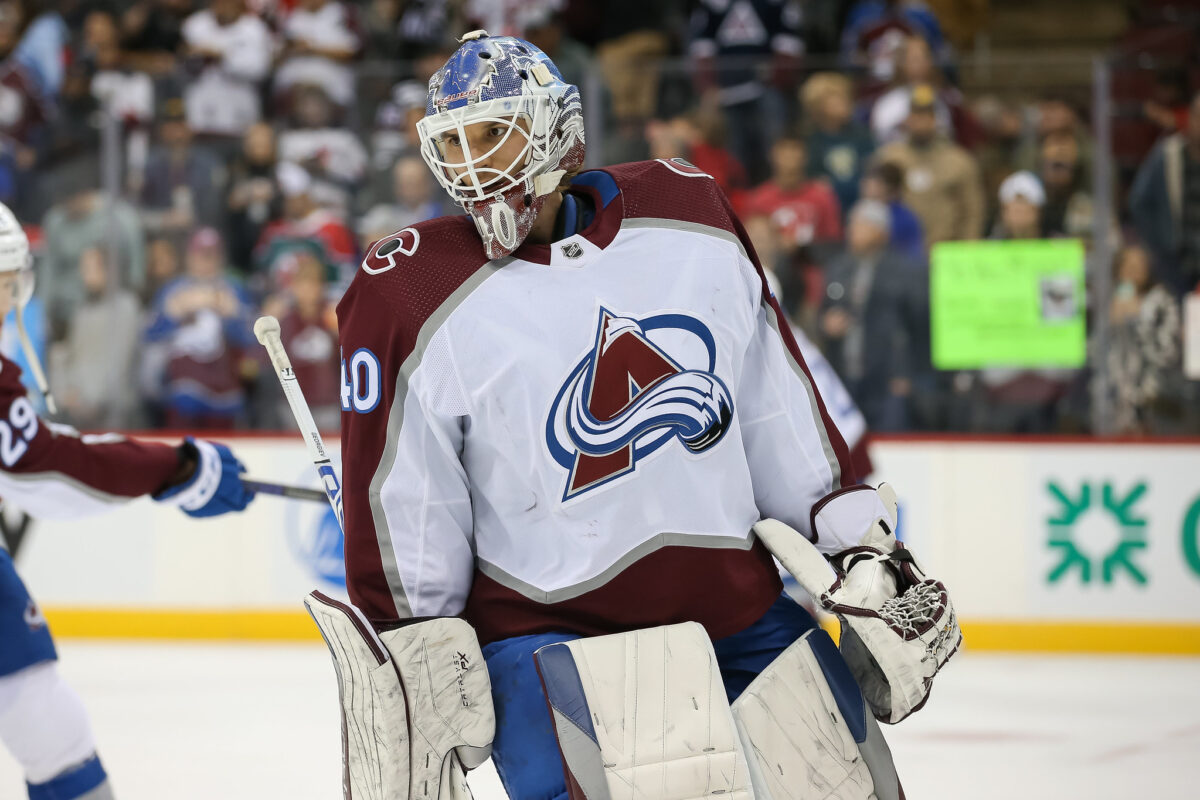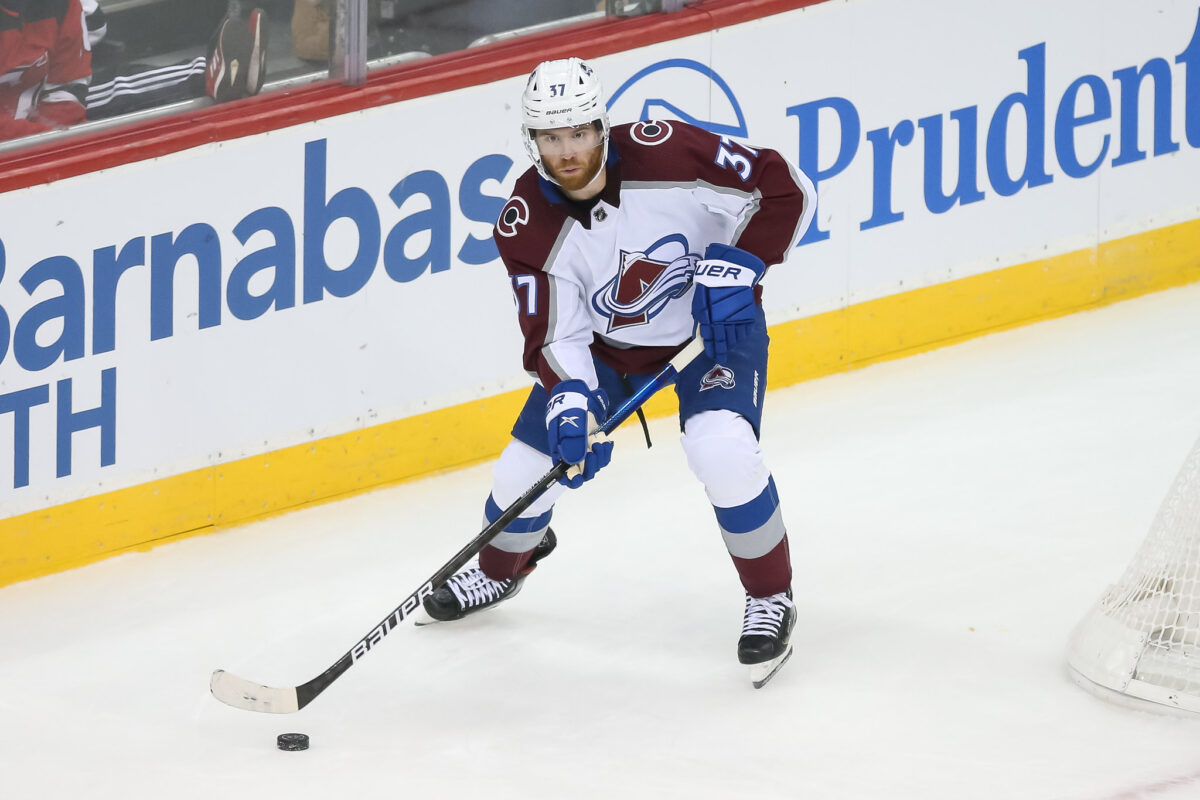After the Colorado Avalanche, long the NHL’s rising superpower, finally made good on their potential and captured the Stanley Cup last season, all eyes were on the reigning champions to see what they could accomplish as an encore in 2022-23.
Even after an offseason rife with significant departures, the hope was that the remaining talent on the roster could preserve the organization’s stature among the league’s elite. For a myriad of reasons, the Avalanche have not enjoyed the smoothest start to their title defence.
The club currently sits on the edge of the Western Conference playoff picture, with their 15-11-2 record a far cry from the franchise’s record-setting performance last season. More than half of the schedule has yet to be played, however, so there remains ample opportunity to make up ground on their peers. With that context in mind, let’s dive into the defining statistics of the Avalanche’s relatively slow start to the 2022-23 season.
Avalanche’s Bloated Injury List the Season’s Defining Storyline
No honest or rational analysis of the Avalanche’s season to date can be done without mentioning the sheer amount of injuries that have decimated the team’s lineup over the first third of the campaign. According to NHL Injury Viz, the Avalanche have accrued the fourth-highest Cap Hit of Injured Players (CHIP), which tallies the per-game cap hit of any player absent through injury or illness. Here’s a look at the total games missed by the team’s top skaters:
| Player | Games Missed |
|---|---|
| Gabriel Landeskog | 28 |
| Darren Helm | 28 |
| Bowen Byram | 18 |
| Valeri Nichushkin | 17 |
| Evan Rodrigues | 9 |
| Josh Manson | 7 |
| Samuel Girard | 6 |
| Nathan MacKinnon | 5 |
Fortunately, the Avalanche have grown accustomed to working with a fully occupied team infirmary. They’ve ranked 12th or higher in total CHIP in each of the past three seasons, sitting 12th in 2021-22, third in 2020-21, and fifth in 2019-20. With several of those listed still considered week-to-week at a minimum – including the recently injured Nathan MacKinnon – expect the missed games ledger to continue to rise.
The Avalanche have been beset by injuries before, but this represents a new level of crisis altogether. After all, who willingly ices the type of lineup head coach Jared Bednar threw out against the Boston Bruins on Dec. 7? It’s a bad look to point towards injuries as the sole reason for a team’s struggles but in the Avalanche’s case, it’s completely warranted.
Avalanche’s Red-Hot Powerplay Keeping Them Afloat
The Avalanche’s on-ice results at 5-on-5 thus far paint a picture of a team straddling the edge of disaster, relying on stellar goaltending (more on that later) to stay competitive. According to Natural Stat Trick, they rank in the bottom half of the league in terms of their share of shots (SF%), expected goals (xGF%), and high-danger chances (HDCF%), well off of the pace typically enjoyed by a Stanley Cup contender.
For most teams, weaker 5-on-5 numbers are usually the byproduct of diminished depth down the lineup, with an unfortunate run of awful injury luck the primary culprit for the Avalanche’s reduced firepower. Yet, those even-strength concerns have been waved away by their high conversion with the man advantage (fourth in the NHL at 27.6 percent).
| Statistic (Per-60-Minutes) | Avalanche | NHL Rank |
|---|---|---|
| Goals | 9.9 | 6th |
| Shots | 57.4 | 14th |
| Scoring Chances | 57.1 | 21st |
| Expected Goals | 7.8 | 22nd |
| High-Danger Chances | 21.4 | 22nd |
What’s interesting, but not surprising, is that the Avalanche’s underlying shot- and chance-generation numbers aren’t all that impressive. The elite finishing and playmaking talent available to them through the likes of MacKinnon, Cale Makar, and Mikko Rantanen helps them outperform those underwhelming rates.
Unsurprisingly, Avalanche skaters rank highly on the NHL’s powerplay scoring leaderboards. The aforementioned trio all find themselves occupying the top 21 leaguewide, with Makar tied for first in powerplay goals by a defenseman (four), and third in points (15). They’ve been relying heavily on the top unit with so many injuries to key attacking options, so a return to full health should be accompanied by a boost at both even strength and with the man advantage.
Outside of the power play, however, the Avalanche have been the NHL’s most snake-bitten group in front of the net by a wide margin. It’s understandable given the state of their lineup, but their misfortune is remarkable nonetheless. They rank 24th overall, but most of that is due to their powerplay success where they rank eighth with a 17.3% SH%. In comparison, the Avalanche have only found the back of the net on 6.2 percent of their shots at 5-on-5, ranking dead-last in the league.
You may also like:
- Kyle Connor Extension Talk, Roslovic Update & More NHL Rumors
- NHL’s Top 5 Defenses
- Revisiting the Nazem Kadri Trade
- 8 NHL Head Coaches on the Hot Seat in 2025-26
- Colorado Avalanche Season Preview: Defensemen
The Avalanche’s finishing malaise isn’t isolated to just one player, with MacKinnon (minus-2.2) the only skater on the team to rank within the bottom 100 leaguewide in terms of goals scored above expected. Their even-strength struggles are frustrating to be sure, but their results should regress back to normal once their key contributors return to the lineup.
Although consistently strong results at even strength remain the most reliable predictor of future success, a dominant power play can be the great equalizer. When fully healthy, the Avalanche boast a nearly unparalleled collection of offensive talent capable of outperforming their expected totals. Many teams have employed such a strategy to great effect over the years, and the Avalanche are no different.
Georgiev Proving to Be a Wise Investment
The other most common denominator for teams able to skirt the consequences of poor 5-on-5 play is exceptional goaltending. The Avalanche have their main man in that regard, with newcomer Alex Georgiev currently the proud owner of an 11-6-2 record through 19 games. Among netminders to have played in at least 10 games this season, the 26-year-old also ranks 15th with a .918 save percentage (SV%), 25th in goals saved above expected (GSAx) at plus-3.2, and 14th in high-danger SV%.

The Avalanche have successfully defended their net at 5-on-5 (they rank in the top-third of the NHL in shots and chance quality allowed), so Georgiev hasn’t necessarily faced the most difficult workload compared to his peers. Although most teams fortunate enough to have a bounty of star talent can outscore their problems, it helps to also have a goalie (or two) capable of stealing games on occasion. Backup Pavel Francouz has also held up his end of the bargain, for the most part, posting a .913 SV% and a minus-0.6 GSAx in nine games this season.
Georgiev’s acquisition and the subsequent tandem with Francouz came with some uncertainty heading into the season, but they’ve quelled those concerns for the time being. Considering the pair carried the 34th- and 47th-highest cap hits among all goaltenders entering the 2022-23 season respectively, the Avalanche have little reason to complain about the return on their investments in the crease.
Avalanche Depth Posting Respectable Results Away from Stars
For all of the rightful hand-wringing about the team’s horrendous injury luck and subsequently thin roster going forward, the Avalanche’s depth skaters have held their own when the stars are on the bench at 5-on-5.
According to Natural Stat Trick, the Avalanche own a 49.8% SF%, a 48.9% xGF%, a 48.5 HDCF%, and a 51.3% SCF% when none of MacKinnon, Makar, Rantanen, or Devon Toews are on the ice. Running sub-50 percent results inevitably leads to more losses in the long term, but those marks are within the realm of respectability and the Avalanche stars can make up the difference on the margins.
Outside of those four, Lehkonen and J.T. Compher are the two forwards who have both stayed healthy all year and spearheaded the depth scoring efforts. Lehkonen is tied for second on the team in goals (eight), and Compher has at times been the team’s top center, tied for fifth in even-strength points (11). Valeri Nichushkin is also scoring at a point-per-game clip with 15 points in 11 appearances, but he’s been absent for almost two-thirds of the season.

Unfortunately, the Avalanche have been outscored 17-12 without their primary quartet (a 41.4 percent share of goals) on the ice, but that is more down to poor goaltending and a lack of finishing talent as a result of the numerous injuries to key players. For now, all they can ask is that their supporting cast holds the opposition to a draw and by the underlying numbers, they are accomplishing that to a significant enough degree.
Brighter Days For the Avalanche On the Horizon
For all of the consternation around their injury luck, the Avalanche have successfully navigated choppy waters for the most part. They currently occupy a playoff spot, and their once-inflated list of absences is slowly shrinking.
With more than half of the season remaining, the Avalanche have plenty of time to make up lost ground in the divisional race. Although a better record would increase the likelihood that the team has an easier first-round opponent, they’ve demonstrated their might when firing on all cylinders. Even with an improved Western Conference playoff field, Colorado’s closest competitors have yet to show that they can knock off a full-strength squad in the postseason.
Mix in potential reinforcements via the trade route and all of a sudden, the Avalanche’s prospects of repeating as Stanley Cup champions become much brighter. For the rest of the NHL, that should be a worrying thought indeed.
Data courtesy of Evolving Hockey, MoneyPuck, Natural Stat Trick, and the NHL.
